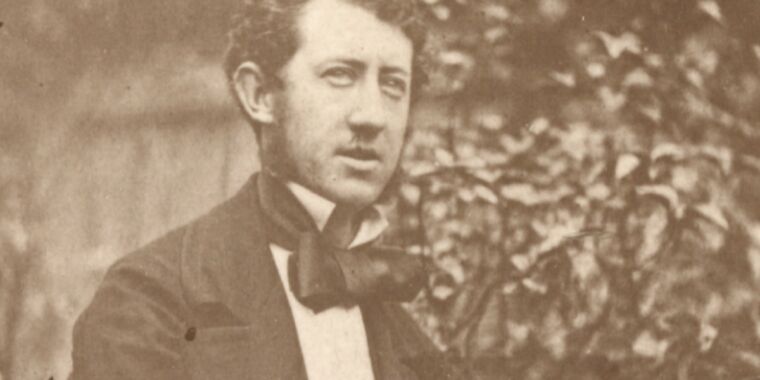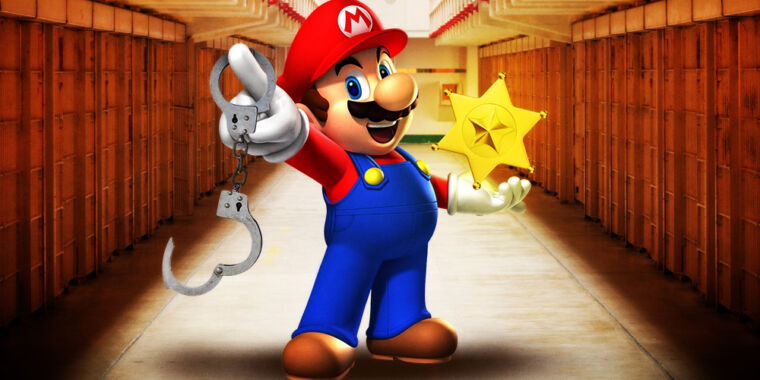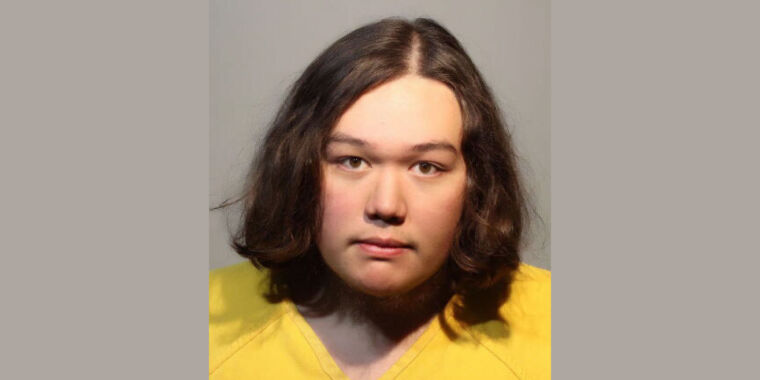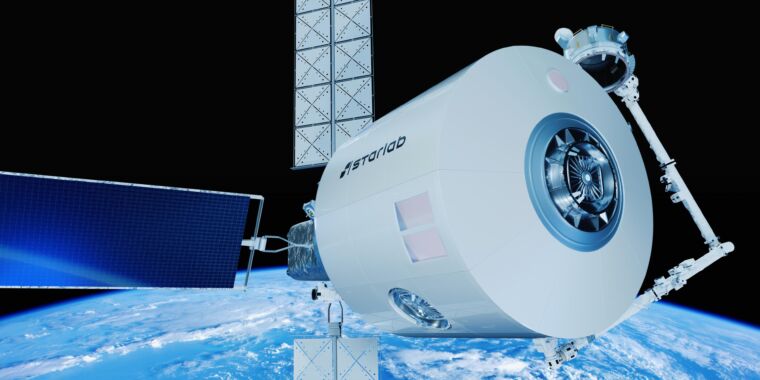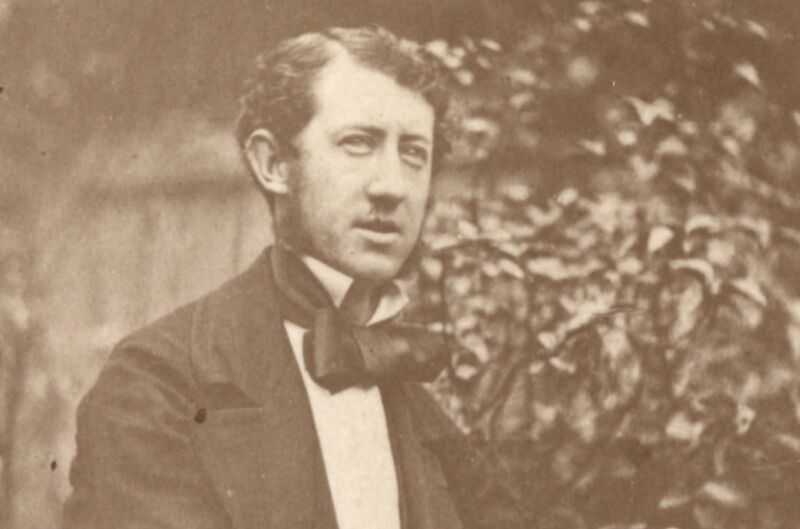
Allport Library and Museum of Fine Arts, State Library of Tasmania
When Australian naturalist and solicitor Morton Allport died in 1878, one obituary lauded the man as “the most foremost scientist in the colony,” as evidenced by his position as vice president of the Royal Society of Tasmania (RST) at the time of his death, among many other international honors. But according to a new paper published in the journal Archives of Natural History, Allport’s stellar reputation was based less on his scholarly merit than on his practice of sending valuable specimens of Tasmanian tigers (thylacines) and aboriginal remains to European collectors in exchange for scientific accolades. Allport admits as much in his own letters, preserved in the State Library of Tasmania, as well as to directing grave-robbing efforts to obtain those human remains.
“Early British settlers considered both thylacines and Tasmanian Aboriginal people to be a hindrance to colonial development, and the response was institutionalised violence with the intended goal of eradicating both,” said the paper’s author, Jack Ashby, assistant director of the University Museum of Zoology at Cambridge in England. “Allport’s letters show he invested heavily in developing his scientific reputation—particularly in gaining recognition from scientific societies—by supplying human and animal remains from Tasmania in a quid pro quo arrangement, rather than through his own scientific endeavors.”
Thylacines have been extinct since 1936, but they were once the largest marsupial carnivores of the modern era. Europeans first settled in Tasmania in 1803 and viewed the tigers as a threat, blaming the animals for killing their sheep. The settlers didn’t view the Aboriginal population much more favorably, and there were inevitable conflicts from the settlers displacing the aborigines and from the increased competition for food. In 1830, a farming corporation placed the first bounties on thylacines, with the government instituting its own bounty in 1888. (Ashby writes that the true sheep killers were the dogs the settlers bred to hunt kangaroos.).
Meanwhile, the so-called “Black War” between settlers and natives led to a state of martial law that “enabled settlers to kill Aboriginal people without punishment,” per Ashby. “After 1830, they were rewarded for doing so.” A Christian missionary named George Augustus Robinson embarked on what was supposed to be a less violent effort (the so-called “Friendly Mission”) to relocate the aboriginal population to Gun Carriage Island in the Bass Strait. But the island had insufficient resources to support the traditional lifestyle and most of those who relocated suffered disease and death. Robinson was nonetheless handsomely rewarded for his efforts with government land grants and cash.
This is the environment in which the young Allport grew up. Born in England, Allport was still a baby when his parents relocated to Tasmania, where his father established himself as among the colony’s most distinguished solicitors. Young Morton followed in his father’s footsteps and became a partner in the same law firm, but he also had a fascination with natural history. He was especially interested in fish breeding and the practice of introducing nonnative species to “improve” local ecosystems (acclimatization). Allport himself introduced English species such as tench, perch, and water lilies to Tasmania, and published 15 papers with the RST. Otherwise, however, his publications amounted to three short articles and a brief note on local fossils between 1866 and 1968.
-
Morton Allport in 1854
Allport Library and Museum of Fine Arts, State Library of Tasmania -
An 1869 trophy photograph of a hunted Tasmanian tiger (thylacine)
Tasmanian Museum and Art Gallery -
Excerpt from Allport’s 1872 letter to craniologist Joseph Barnard Davis. The highlighted text reads, “I can assure you that I took no small trouble to see that the bones were disinterred from only from a sp[ot?] where none but Aborigines were buried.”
Allport Library and Museum, State Library of Tasmania -
The five thylacine skins Morton Allport sent to the University Museum of Zoology, Cambridge, in 1869 and 1871.
University of Cambridge -
Jack Ashby with the University Museum of Zoology thylacine skins, sent from Allport in 1869 and 1871.
University of Cambridge / Natalie Jones
“It is curious, then, that he received so many accolades from elite scientific institutions,” Ashby wrote in his paper. He turned to the man’s correspondence for insight into how he built his scientific reputation out of a relatively sparse publication record. According to Ashby, in at least one letter to a former teacher, Allport explicitly declared his expectation of a quid pro quo for supplying specimens, particular thylacines and Aboriginal human remains, which were increasingly in demand as their respective numbers diminished.
Allport wrote of how he was helping put together a complete set of Tasmanian mammal skeletons for the RST museum, “and I would gladly do the same thing for any of the English Societies if I could be elected a Fellow in return. Is this possible?” Clearly it was very much possible. Allport was a Fellow of the Royal Linnæan Society of London, the Zoological Society of London, the Royal Botanical Society. He was a corresponding member of the Anthropological Institute of Great Britain (elected after supplying an aboriginal human skeleton), a life member of the Entomological and Malacological Societies, and a foreign member of several Continental scientific societies, among other honors.
In addition to contributing more thylacine specimens to museums in the UK and mainland Europe than any other known donor, Allport claimed to be the “principal exporter” of the remains of Aboriginal people to Europe. European naturalists particularly coveted these human specimens so grave-robbing was not uncommon. Allport was involved in such efforts, as evidenced by his 1872 letter to craniologist Joseph Barnard Davis. “I can assure you that I took no small trouble to see that the bones were disinterred from only from a sp[ot?] where none but Aborigines were buried,” he wrote. The German nationalist Amalie Dietrich had no qualms about asking Queensland settlers to shoot an Aboriginal man for her private collection.
(Warning: Some disturbing details about mutilated human remans are below.)
Jack Ashby of the University of Cambridge discusses his research into the Australian mammals in the Cambridge collection in 2022.
Unlike the thylacine, Tasmanian aborigines did not go extinct, but an Aboriginal man named William Lanne was believed at the time to be the last male Tasmanian. When he died in 1869, therefore, his body was considered a prize specimen. Lanne’s body was taken to a hospital “dead house” and both Allport (who wanted the body for the RST) and another naturalist collector named William Crowther (who wanted to bring the remains to London) laid claim to the remains. When the Colonial Secretary decided in Allport’s favor, Crowther and his son snuck into the dead house, removed Lanne’s skull, and replaced it with a white man’s skull they had removed from another body.
Allport responded by asking an associate to remove Lanne’s feet and hands, arguing that this didn’t count as desecration since the remains were already damaged. Lanne’s body was buried, but the grave wasn’t guarded. Naturally Crowther tried to steal the body, but he only found an empty coffin containing nothing but the white man’s skull. The same Allport associate had disinterred Lanne’s body, brought it to the hospital and “removed his bones,” per Ashby.
Allport subsequently tried to recover Lanne’s skull, writing a letter to a colleague at the Royal College of Surgeons of England (RCSE), rumored to be in possession of Lanne’s skull and two vertebrae. Allport pretty much admitted that the RST was in possession of Lanne’s skeleton in that letter, writing that “the best of the bones are in the Tas. Roy. Soc. Museum”—and offering to provide those bones to the RCSE so that the skeleton could be complete. The College didn’t have the skull. It may have wound up in the RCSE collection or with the University of Edinburgh, but it has never been formally identified by either.
An Aboriginal woman named Truganini was Lanne’s female counterpart. She died in 1876, requesting that her body be cremated to avoid ending up in a museum collection. That request was not honored. She was buried in a female convict factory, and within two years, the RST—with Allport now serving as vice president—secretly exhumed the body and turned her skeleton into a traveling exhibit, before going on display in the Tasmanian Museum between 1904 and 1947.
The collection of the University Museum of Zoology in Cambridge, where Ashby works, has 40 Australian mammals and eleven birds donated by Allport, including nine thylacine skins sent in 1869 and 1871. “Although Allport did not send any human remains to Cambridge, I can no longer look at these thylacine skins without thinking of the human story they relate to,” said Ashby. “It shows how natural history specimens aren’t just scientific data—they also reflect important moments in human history, much of which was tragically violent.”
DOI: Archives of Natural History, 2023. 10.3366/anh.2023.0859 (About DOIs).

